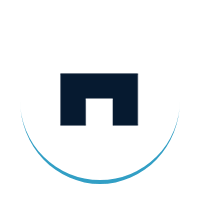How flexible is your organization?
 In the Dutch magazine ‘ondernemen’ I read the following facts from a research conducted by ‘TNO Arbeid’:
In the Dutch magazine ‘ondernemen’ I read the following facts from a research conducted by ‘TNO Arbeid’:
– In 2008 and 2009, 1 out of 5 SME’s in Holland has fired people
– Half of SME’s plan to grow the ‘flexible skin’ of their organization
– By 2012, 25% of employees will have a flexible contract
Because of the economic downturn, companies were forced to fire people. In Europe this can incur high costs as labor laws are strict and employees are protected. As a result, companies are reluctant to hire new employees and try to make a bigger part of their staff flexible. Unless the labor laws of Europe change, I wonder whether 25% flexible staff is enough to build a flexible organization.
Last week I was speaking to an entrepreneur who recently started a company above Amsterdam (counter creatives). He told me that he plans to run his company together with his partner and all the ‘development’ will be done by external people. Isn’t that the organization of the future? Create value in a network and keep your business (completely) flexible?
 In the Dutch magazine ‘ondernemen’ I read the following facts from a research conducted by ‘TNO Arbeid’:
In the Dutch magazine ‘ondernemen’ I read the following facts from a research conducted by ‘TNO Arbeid’:
– In 2008 and 2009, 1 out of 5 SME’s in Holland has fired people
– Half of SME’s plan to grow the ‘flexible skin’ of their organization
– By 2012, 25% of employees will have a flexible contract
Because of the economic downturn, companies were forced to fire people. In Europe this can incur high costs as labor laws are strict and employees are protected. As a result, companies are reluctant to hire new employees and try to make a bigger part of their staff flexible. Unless the labor laws of Europe change, I wonder whether 25% flexible staff is enough to build a flexible organization.
Last week I was speaking to an entrepreneur who recently started a company above Amsterdam (counter creatives). He told me that he plans to run his company together with his partner and all the ‘development’ will be done by external people. Isn’t that the organization of the future? Create value in a network and keep your business (completely) flexible?
 In the Dutch magazine ‘ondernemen’ I read the following facts from a research conducted by ‘TNO Arbeid’:
In the Dutch magazine ‘ondernemen’ I read the following facts from a research conducted by ‘TNO Arbeid’:
– In 2008 and 2009, 1 out of 5 SME’s in Holland has fired people
– Half of SME’s plan to grow the ‘flexible skin’ of their organization
– By 2012, 25% of employees will have a flexible contract
Because of the economic downturn, companies were forced to fire people. In Europe this can incur high costs as labor laws are strict and employees are protected. As a result, companies are reluctant to hire new employees and try to make a bigger part of their staff flexible. Unless the labor laws of Europe change, I wonder whether 25% flexible staff is enough to build a flexible organization.
Last week I was speaking to an entrepreneur who recently started a company above Amsterdam (counter creatives). He told me that he plans to run his company together with his partner and all the ‘development’ will be done by external people. Isn’t that the organization of the future? Create value in a network and keep your business (completely) flexible?
 In the Dutch magazine ‘ondernemen’ I read the following facts from a research conducted by ‘TNO Arbeid’:
In the Dutch magazine ‘ondernemen’ I read the following facts from a research conducted by ‘TNO Arbeid’:
– In 2008 and 2009, 1 out of 5 SME’s in Holland has fired people
– Half of SME’s plan to grow the ‘flexible skin’ of their organization
– By 2012, 25% of employees will have a flexible contract
Because of the economic downturn, companies were forced to fire people. In Europe this can incur high costs as labor laws are strict and employees are protected. As a result, companies are reluctant to hire new employees and try to make a bigger part of their staff flexible. Unless the labor laws of Europe change, I wonder whether 25% flexible staff is enough to build a flexible organization.
Last week I was speaking to an entrepreneur who recently started a company above Amsterdam (counter creatives). He told me that he plans to run his company together with his partner and all the ‘development’ will be done by external people. Isn’t that the organization of the future? Create value in a network and keep your business (completely) flexible?
I believe a company has a great competitive advantage if it is able to scale up and down easily. When the economic tide goes up, it can attract the right (amount of) people to fulfill all orders. When a recession starts, it can scale down easily. I think that many people would agree to this advantage, but why is that most companies still think in terms of ‘employees’ and ‘people that sit in my office’? Maybe the main reason is costs?
The Dutch labor market (and similarly many other Western European economies) provides some possibilities to hire flexible manpower. In the first place employees can work on a temporary contract, with maximum three temporary contracts of 6 or 12 months (after which the contract has to be permanent by law). We have employment agencies, who offer temporary personnel. And there are many freelancers. First downside: labor laws prescribe that such temporary contracts can’t be for a long period; otherwise it will be considered an employment contract and the company is taxed accordingly. Second: all these types of flexible manpower come at a premium price compared to hiring an employee.
Now I wonder: why doesn’t every company strategically decide to hire offshore and/or nearshore staff on a big scale? Offshoring gives companies the possibility of flexible contracts, costs can be kept low and it is much easier to find the ‘perfect match’ for vacancies. In the paper ‘Computable’ I read that 45% (in 2008: 35%) of the budget for external it services of western European companies is spent on offshoring. This shows that the popularity is increasing (but doesn’t tell us which part is still kept ‘in house’), but still many companies are reluctant or afraid.
I would like to receive some feedback on the questions:
– Is a lean and (fully) flexible organization the organization of the future?
– What role do you envision for offshoring and nearshoring in building a flexible organization?
Bridge is a global outsourcing powerhouse. We enable companies to hire flexible staff from our offices in Ukraine and India.
I believe a company has a great competitive advantage if it is able to scale up and down easily. When the economic tide goes up, it can attract the right (amount of) people to fulfill all orders. When a recession starts, it can scale down easily. I think that many people would agree to this advantage, but why is that most companies still think in terms of ‘employees’ and ‘people that sit in my office’? Maybe the main reason is costs?
The Dutch labor market (and similarly many other Western European economies) provides some possibilities to hire flexible manpower. In the first place employees can work on a temporary contract, with maximum three temporary contracts of 6 or 12 months (after which the contract has to be permanent by law). We have employment agencies, who offer temporary personnel. And there are many freelancers. First downside: labor laws prescribe that such temporary contracts can’t be for a long period; otherwise it will be considered an employment contract and the company is taxed accordingly. Second: all these types of flexible manpower come at a premium price compared to hiring an employee.
Now I wonder: why doesn’t every company strategically decide to hire offshore and/or nearshore staff on a big scale? Offshoring gives companies the possibility of flexible contracts, costs can be kept low and it is much easier to find the ‘perfect match’ for vacancies. In the paper ‘Computable’ I read that 45% (in 2008: 35%) of the budget for external it services of western European companies is spent on offshoring. This shows that the popularity is increasing (but doesn’t tell us which part is still kept ‘in house’), but still many companies are reluctant or afraid.
I would like to receive some feedback on the questions:
– Is a lean and (fully) flexible organization the organization of the future?
– What role do you envision for offshoring and nearshoring in building a flexible organization?
Bridge is a global outsourcing powerhouse. We enable companies to hire flexible staff from our offices in Ukraine, Moldova and India.
I believe a company has a great competitive advantage if it is able to scale up and down easily. When the economic tide goes up, it can attract the right (amount of) people to fulfill all orders. When a recession starts, it can scale down easily. I think that many people would agree to this advantage, but why is that most companies still think in terms of ‘employees’ and ‘people that sit in my office’? Maybe the main reason is costs?
The Dutch labor market (and similarly many other Western European economies) provides some possibilities to hire flexible manpower. In the first place employees can work on a temporary contract, with maximum three temporary contracts of 6 or 12 months (after which the contract has to be permanent by law). We have employment agencies, who offer temporary personnel. And there are many freelancers. First downside: labor laws prescribe that such temporary contracts can’t be for a long period; otherwise it will be considered an employment contract and the company is taxed accordingly. Second: all these types of flexible manpower come at a premium price compared to hiring an employee.
Now I wonder: why doesn’t every company strategically decide to hire offshore and/or nearshore staff on a big scale? Offshoring gives companies the possibility of flexible contracts, costs can be kept low and it is much easier to find the ‘perfect match’ for vacancies. In the paper ‘Computable’ I read that 45% (in 2008: 35%) of the budget for external it services of western European companies is spent on offshoring. This shows that the popularity is increasing (but doesn’t tell us which part is still kept ‘in house’), but still many companies are reluctant or afraid.
I would like to receive some feedback on the questions:
– Is a lean and (fully) flexible organization the organization of the future?
– What role do you envision for offshoring and nearshoring in building a flexible organization?
Bridge is a global outsourcing powerhouse. We enable companies to hire flexible staff from our offices in Ukraine, Moldova and India.
I believe a company has a great competitive advantage if it is able to scale up and down easily. When the economic tide goes up, it can attract the right (amount of) people to fulfill all orders. When a recession starts, it can scale down easily. I think that many people would agree to this advantage, but why is that most companies still think in terms of ‘employees’ and ‘people that sit in my office’? Maybe the main reason is costs?
The Dutch labor market (and similarly many other Western European economies) provides some possibilities to hire flexible manpower. In the first place employees can work on a temporary contract, with maximum three temporary contracts of 6 or 12 months (after which the contract has to be permanent by law). We have employment agencies, who offer temporary personnel. And there are many freelancers. First downside: labor laws prescribe that such temporary contracts can’t be for a long period; otherwise it will be considered an employment contract and the company is taxed accordingly. Second: all these types of flexible manpower come at a premium price compared to hiring an employee.
Now I wonder: why doesn’t every company strategically decide to hire offshore and/or nearshore staff on a big scale? Offshoring gives companies the possibility of flexible contracts, costs can be kept low and it is much easier to find the ‘perfect match’ for vacancies. In the paper ‘Computable’ I read that 45% (in 2008: 35%) of the budget for external it services of western European companies is spent on offshoring. This shows that the popularity is increasing (but doesn’t tell us which part is still kept ‘in house’), but still many companies are reluctant or afraid.
I would like to receive some feedback on the questions:
– Is a lean and (fully) flexible organization the organization of the future?
– What role do you envision for offshoring and nearshoring in building a flexible organization?
Bridge is a global outsourcing powerhouse. We enable companies to hire flexible staff from our offices in Ukraine, Moldova and India.



Flexibility and agility are hallmarks of great organizations and they are not achieved in a day. In the current context, flexibility and agility would mean the following abilities in an organization –
1) Ability to continuously assess the shift in consumer demand and stay ahead with organization and supply strategy
2) Ability to deliver supply just in time for consumer demand
3) Have a supply ecosystem friendly to an environment of flexible demand
While item 1 is a matter of agility, item 2 and 3 are matters of flexibility and the supply ecosystem is the most critical item that delivers this flexibility (or the lack of it) to an organization. In the classical business management theorem, supply has 5 components – (i) man (ii) machine (iii) materials (iv) methods and (v) measures. Companies traditionally keep methods and measures in-house and source man, machine and materials from their supply ecosystems in varying degrees.
There is a new paradigm to this whole mathematics as the world emerges out of the second great depression (if it is fair to call it so). The only sustainable asset in today’s times for a corporation is its competitive advantage. Competitive advantages, on the other hand. are short lived and one has to continuously find and acquire a new one. While that stress tests the corporation’s agility, the ability to fulfill that demand measures the corporation’s flexibility.
This new paradigm has also changed the whole story about what is “core” and what is “non-core”. The new “Core” is only the ability to sustain and grow competitive advantage and everything else is the new “non-core”. The sustenance of competitive advantage again is all about the ability to harness the knowledge about demand, future and competition into a strategy and the ability to program manage the execution of the same. Strategic thinking and strategic program management, in all aspects of the organization, is the new “core” really. That leaves a whole gamut of organizations and activities as “non-core” which can be sourced from the supply ecosystem. Some aspects of this new non-core is horizontal or function specific and others are vertical or industry specific. People, capabilities, materials, technology, methods, machinery and measurement systems are all part of the new supply ecosystem which delivers the new “non-core”.
Organizations that follow this not so new code of sustainable competitive advantage will be the true flexible, agile organizations of tomorrow. Many already do, some are starting and others will remain the organizations of today and very soon become those of yesterday.
This phenomenon, at the same time, is the next big leap for the supply ecosystem. The supply ecosystem is no longer just individual corporations – it is also nations, societies and institutions. And “specialists” are emerging in providing supply of people, capabilities, materials, methods, technology, machinery and measurement systems each of which are sourced globally. People and capabilities for one are intricately bonded and are available in finite numbers across a global map segmented as near shore and offshore. Both near shoring and off shoring is increasing as the labour gap in the west widens and corporations are in dire need of a clear nearshore-offshore deployment strategy which will vary by the industry and geography. “Any shoring”, if we can put that as the new global sourcing mantra, is emerging as the new hallmark for supply ecosystem maturity or supply flexibility.
To sum it all, agility has got a new strategic dimension and flexibility a new global mandate.
Hugo, hope the above is a reasonable attempt to answer your question a bit comprehensively! Or did I confuse more than I conveyed?